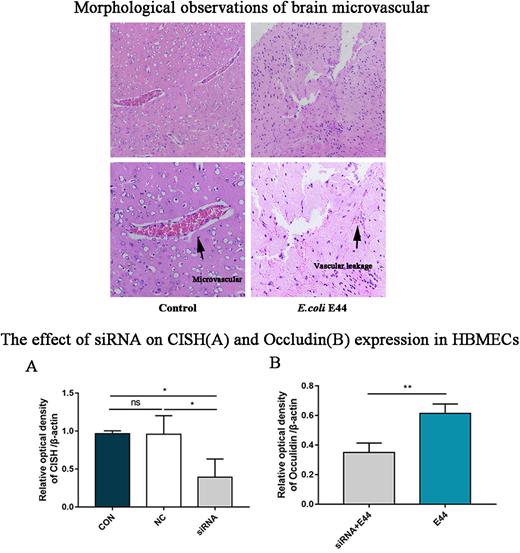Abstract
Backgrounds: Despite the availability of antibiotics over the last several decades, an unmet requirement still exists for new practical therapeutic approaches to treat pediatric infections, especially in developing countries. Most of these deaths were caused by bacterial sepsis and meningitis (BSM), which is characterized by high mortality and adverse prognosis. Recently, CHINET (China bacterial resistance monitoring network) reported that "as the most common gram-negative bacterial pathogens causing BSM, Escherichia coli (E. coli) exhibits an uncontrollable, increasing multi-antibiotics resistance" (http://www.chinets.com). Antibiotics are effective in treating pediatric BSM, but antibiotic overuse increases the risk of drug resistance. In addition, excessive antibiotic treatments in BSM patients were related to several adverse outcomes, including necrotizing enterocolitis (NEC), late-onset sepsis (LOS), and even death. Hence, the crosstalk between host-pathogen interactions has become a new strategy and research point for developing antibiotic replacement therapy. Published studies suggest that the suppressor of cytokine signaling proteins (SOCS) are the main regulators in the innate immune reaction induced by a microbial pathogen, avoiding excessive inflammation. Recent studies have found that SOCS proteins can function as executors and contribute to the downregulation of proinflammatory factors associated with infection. As an important member of the SOCS family, the CISH protein defense mechanism of Pediatric E. Coli-induced BSM was unclear. This study explored the underlying defense mechanism of CISH during pediatric E. coli-induced BSM.
Methods and materials: Sixteen mice were randomly divided into two groups (control group, E. coli E44 group). Mice were given sterile normal saline and E. coli E44 (1×107CFU/mouse) by intraperitoneal administration, respectively. After infection for 8 h, mice in different groups were sacrificed to collect brain tissues and fixed in 10% formalin buffer solution for 24h. The sample were pretreated (dehydration, embedding, sectioning, hyalinization, H&E staining and sealing) and morphological observations. Human brain microvascular endothelial cells (HBMECs) in 6-well plates (1×105 cells/well) were cotransfected with GV492-CISH plasmid and siRNA using Lipofectamine 3000 reagent. The vector GV492-CISH (MW: 12.7 kb) was identified by restriction enzyme digestion and nucleotide sequencing. Then, the cells were incubated for 2-3 days to constructed the CISH overexpression HBMECs. HBMECs were inoculated in 96-well plates (excluding the edge effect) and divided into a control group, E. coli E44 infection group and E. coli E44+CISH siRNA pretreatment group. After E. coli. E44 infection for 2 h, the expression of Occludin was detected by Western Boltting. SPSS 20.0 software was used for statistical analysis. P <0.05 were considered statistically significant.
Results: H&E staining showed that E. coli E44 could induce impairments in endothelial cells and cause brain microvascular damage. Histological damage was characterized by microvascular collapse, destruction of the bases, and RBC cells that were irregularly positioned into the tissue space. Few well-structured blood capillaries could be observed under a typical view. Expression of Occludin declined significantly in the E. coli E44 infection group compared with the uninfected group(P<0.01). In addition, compared with the untreated group, designed siRNA showed an acceptable inhibition effect of CISH with statistical significance (P<0.05). The expression of Oc-cludin in HBMECs treated with siRNA decreased significantly compared with that in HBMECs not treated with siRNA after infection (P<0.01). These results suggested that CISH defense mechanism during pediatric E. coli-induced BSM, CISH knockdown aggravated E. coli-induced blood brain barrier injury in BSM.
Disclosures
No relevant conflicts of interest to declare.
Author notes
Asterisk with author names denotes non-ASH members.


